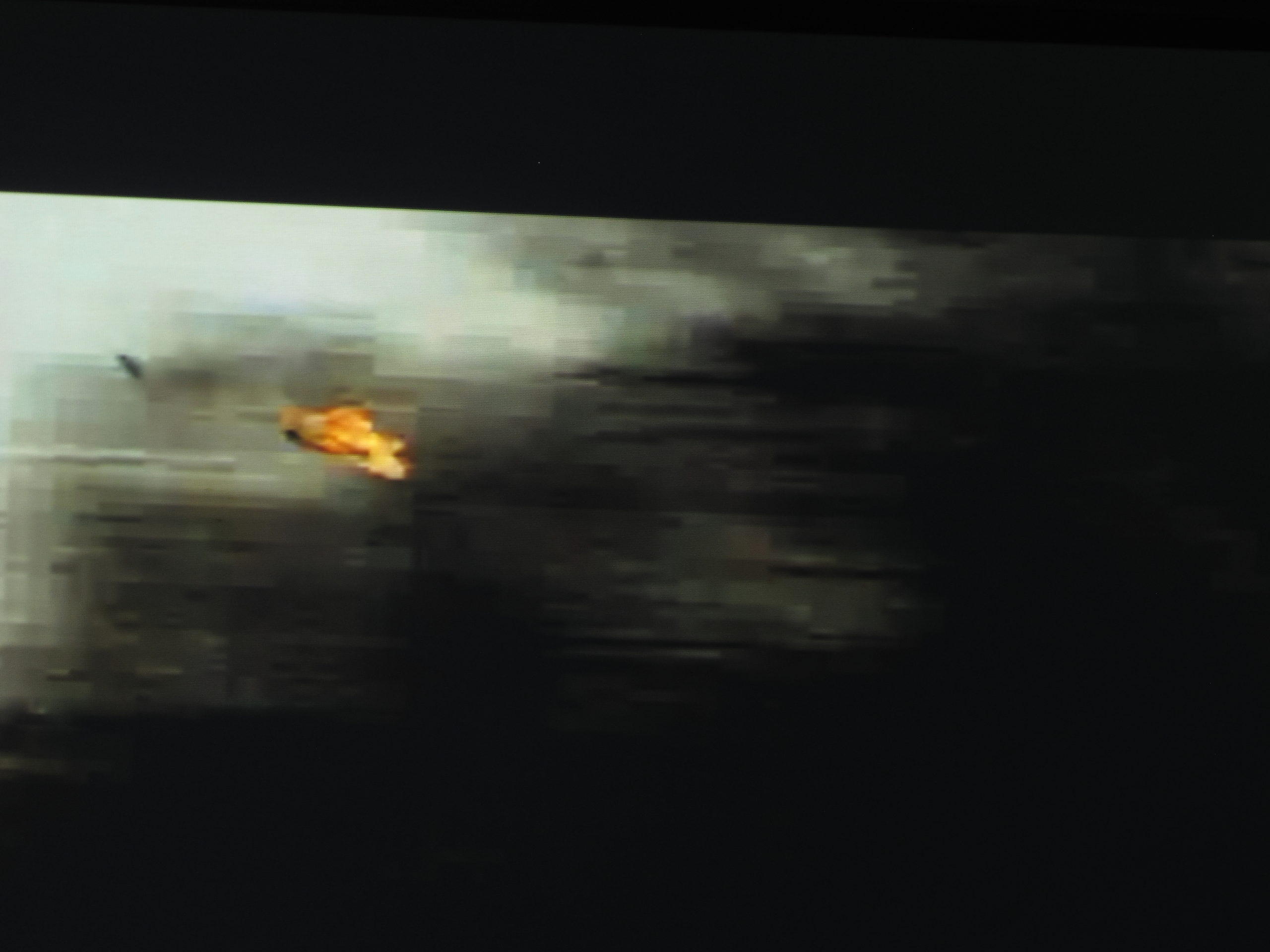Written by: Brian Holmes
We’re rolling along a beat-up country road, with heat lightning flashing in the distance. “That’s the refinery of Berisso, where we went with CuencasLabs a few years ago,” says my collaborator Alejandro Meitin who’s at the wheel. The heavy drops of summer rain start falling, tap-tap-tap on the roof of the old car. This is the estuary zone of Río del Plata in Argentina, around an hour’s drive southeast of Buenos Aires. I’m in the country to help set up an exhibition called “The Earth Will Not Abide” which is about community-based ecological activism in the face of devastating industrial agriculture. The show is a collaboration between the Compass group in Chicago, where I live, and Casa Río out here on the estuary.
Alejandro, who’s been collaborating with the island dwellers of the Paraná River Delta for the last twenty-five years, has organized a fascinating series of exploratory events combining urban artists and researchers with local inhabitants, at sites stretching from the grain-exporting city of Rosario upriver where the show will be held, all the way down here to the estuary. To give some grassroots media presence to these events, I worked with a brilliant Seattle startup called Mapseed to develop an interactive online map of the Delta, which allows users to upload texts, photos and videos dealing with the issues that currently confront the local ecosystems. Behind this interactive tool is a science-based ecopolitical atlas called Living Rivers / Ríos Vivos, which the two of us made together for the first version of “The Earth Will Not Abide” The idea in that work was to explore the intricacies of savannah and riverine ecology, as a kind of latter-day principle of hope in the face of the bulldozer called industrial agriculture – especially soybean farming, which has undergone tremendous expansion in recent years, due to the emergence of the ever-hungry Chinese market. Tofu is cool, but the reduction of entire biomes to monocrops in the name of animal feed and human greed is definitely not.
These mapping works are just one part of a larger investigation that I’ve been pursuing for the last ten years, into the new, oligarchical form of financially driven global capitalism that has come into being after the crisis of 2008. Such a turn for the worse was widely predicted by the participants of the counter-globalization movement at the turn of the millennium, including yours truly. But of course we could not foresee its devastating consequences in detail, nor imagine the heavy dark clouds of racism and nationalism that have gathered over current populist movements. Well, you have to take reality as it comes, and somehow find a way to push back at it.
Like untold millions of others, I’ve been strongly impacted by a growing awareness of all the tragic ecological trendlines that are currently leading the Earth into the Sixth Mass Extinction. I got a first flash when I came down to Argentina with Critical Art Ensemble in 2014, to participate in “CuencasLab: Watersheds as Laboratories of Governance,” which Alejandro had organized along with dozens of other partners. I got another flash when I went with a bunch of Chicago friends to lead a seminar at the Anthropocene Campus in Berlin in 2016, resulting in the formation of a group called Deep Time Chicago when we returned home. And then I guess I got yet another flash when I started work in the Pacific Northwest of the United States, where I began to understand just how much influence Native Americans were having on a real transformation of territorial governance – something I have started theorizing as the emergence of a bioregional state. All of this is a lot like the heavy air, the hot drops of rain, the flickering lights of the refinery in the distance: it hits you, it pervades you, it becomes part of you, it’s the atmosphere of the present.
Brian Holmes is a cultural critic and self-taught cartographer, living in the US for the last decade after some twenty years in France. He’s known for his art criticism and his theoretical work on global capitalism, which he now pursues as an artist, since there’s no concept of “autonomous theorist” in the USA. He’s a greybeard of the mailinglist nettime, collaborates with the Compass Group and Deep Time Chicago in the US, and more recently with Casa Río in Argentina. His current production swings between the magnetic poles of geography, geopolitics, earth science and tactical media, with a strong influence from the Anthropocene Campus program at HKW Berlin.


